Vocabulary development Normal Vowels Worksheets for Ages 3-7
6 filtered results
-
From - To
Boost your child's vocabulary skills with our engaging Normal Vowels Worksheets designed for ages 3-7! These interactive worksheets provide a fun and effective way to enhance phonetic understanding and vocabulary development through playful activities. Children will explore short and long vowel sounds while completing engaging exercises that promote language growth. Each worksheet is tailored to capture young learners' attention and foster a love for reading and writing. Ideal for homeschooling, classroom activities, or supplemental learning, our comprehensive resources empower parents and teachers to support foundational literacy skills. Join us in making vocabulary building an enjoyable adventure for your little ones!
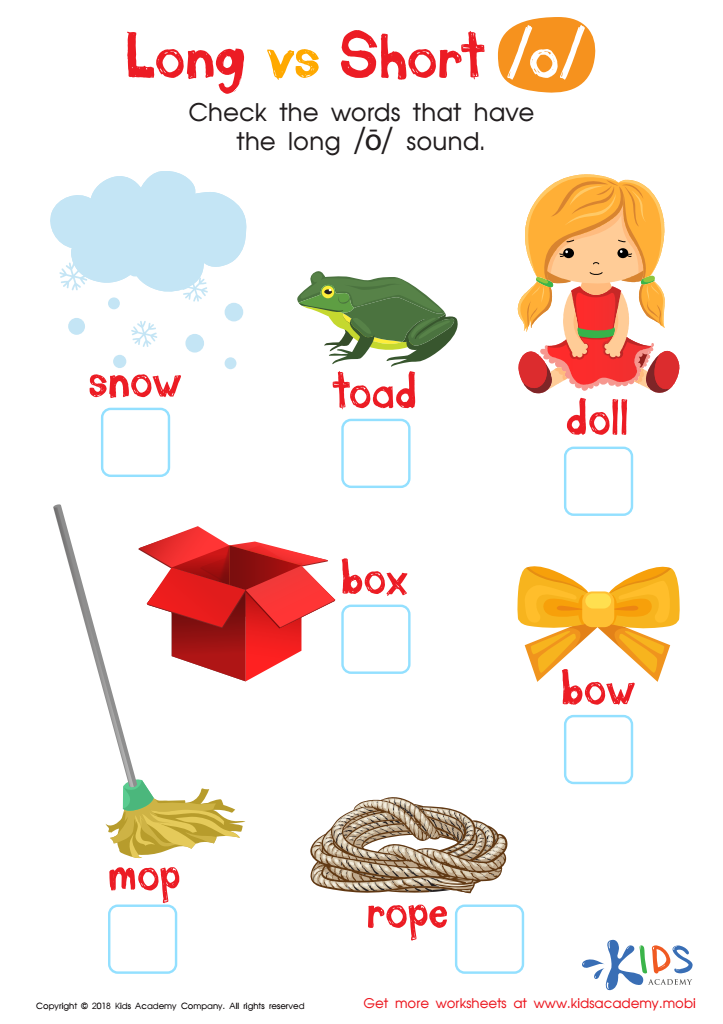

Long vs Short O Reading Worksheet
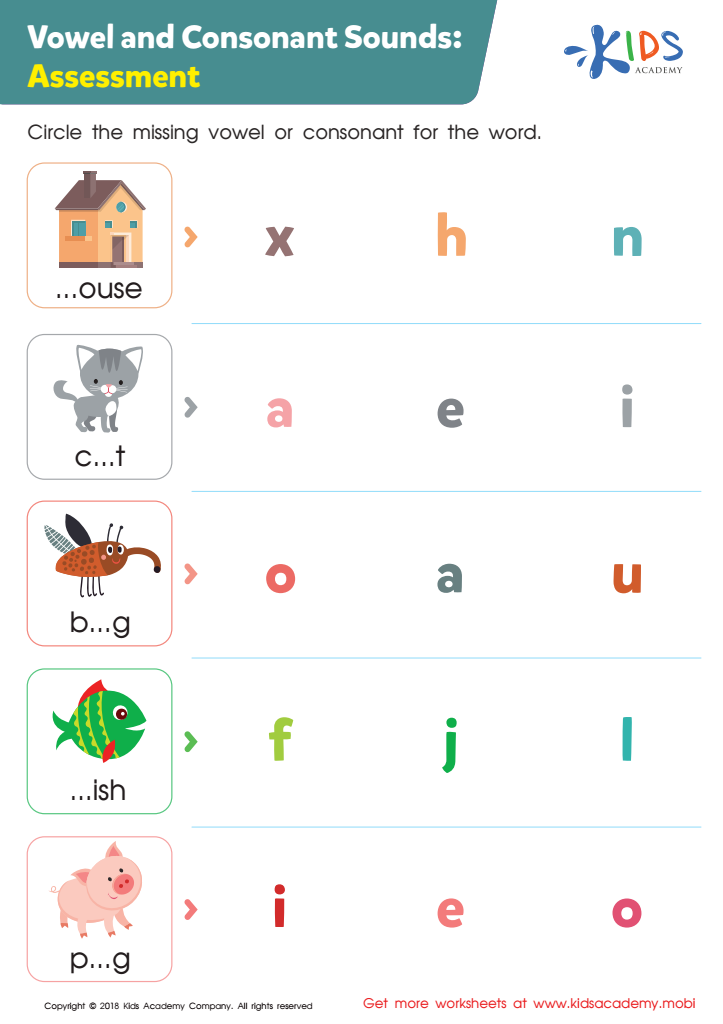

Vowel and Consonant Sounds: Assessment Worksheet
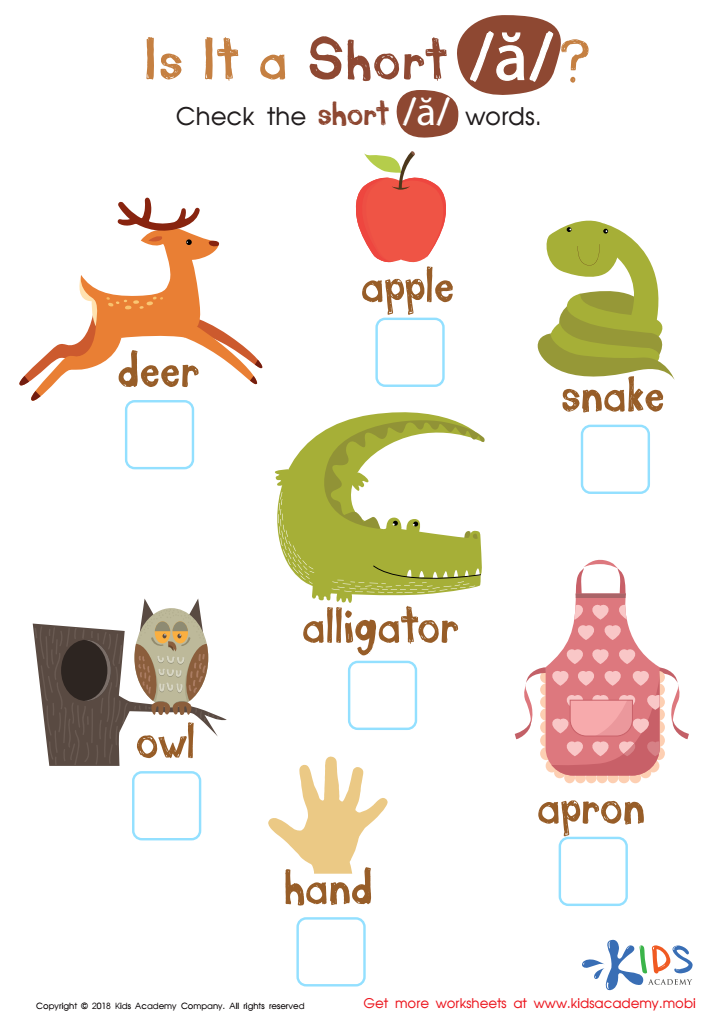

Is It Short A? Reading Worksheet
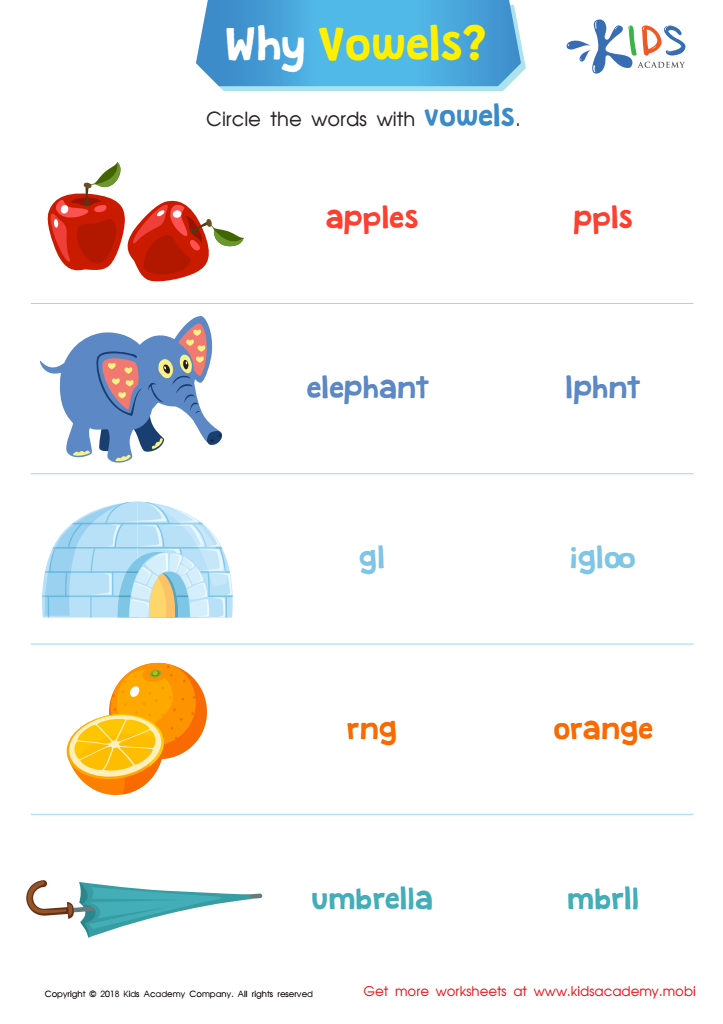

Why Vowels? Reading Worksheet
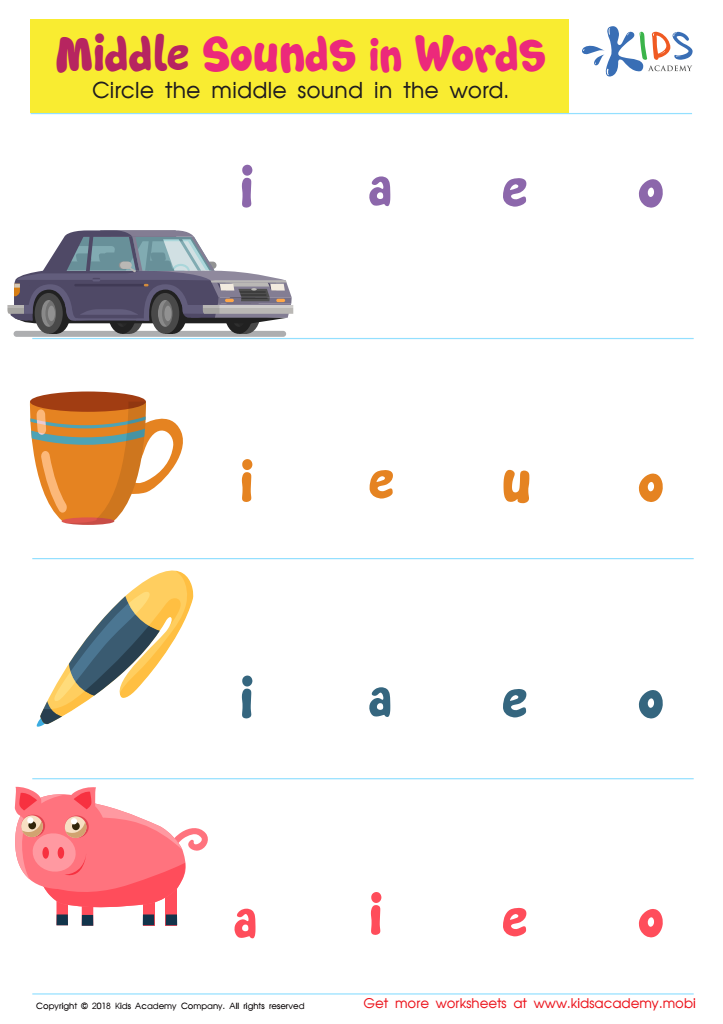

Middle Sounds in Words Worksheet
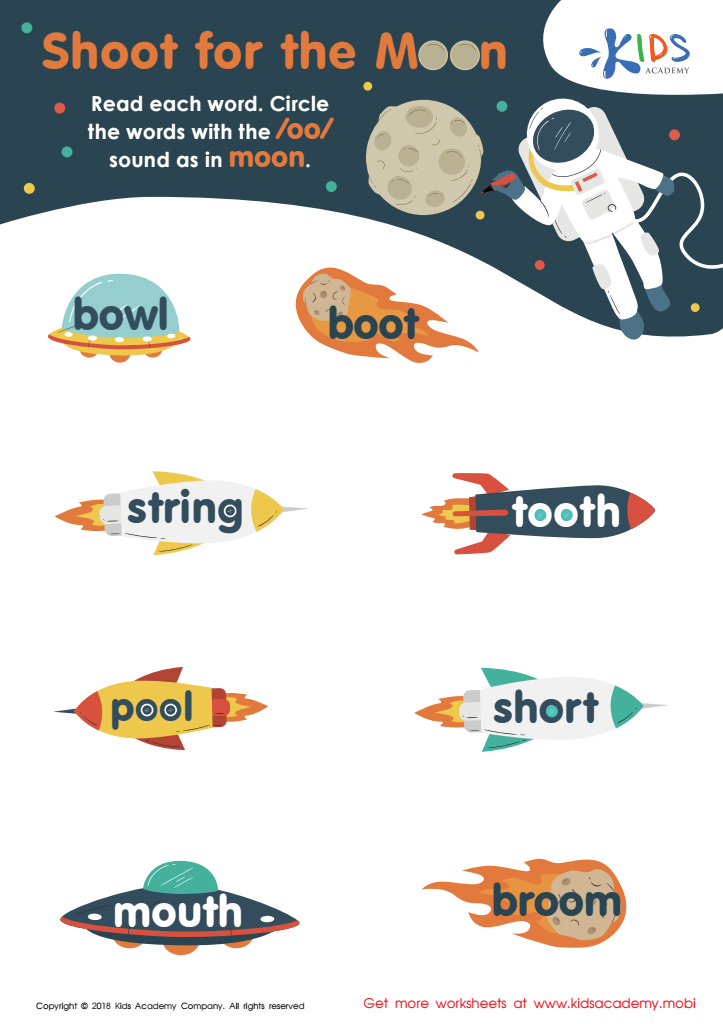

Reading: Shoot for the Moon Worksheet
Vocabulary development, particularly the understanding and usage of normal vowels, is crucial for children aged 3-7 as it lays the foundation for effective communication and literacy skills. During these formative years, children’s brains are exceptionally receptive, and exposure to rich vocabulary enhances their cognitive development. Mastering normal vowels— the fundamental sounds in spoken language— is critical as they form the backbone of word construction. This knowledge helps children decode words during early reading.
Parents and teachers should prioritize vocabulary development, as it promotes better listening and speaking skills, enabling children to express their ideas clearly. It also fosters social interactions, helping children build relationships with peers and adults. Moreover, a strong vocabulary is linked to academic success; children with a robust word bank often excel in reading comprehension, which is essential for all subjects in school.
Engagement in playful activities, songs, and storytelling that focus on normal vowels can enrich children's language experience. By deliberately incorporating vocabulary enhancement into everyday interactions, caregivers can nurture confident communicators and lifelong learners. Investing in vocabulary development during these critical years inevitably shapes a child’s future academic performance and social competencies.

 Assign to My Students
Assign to My Students











